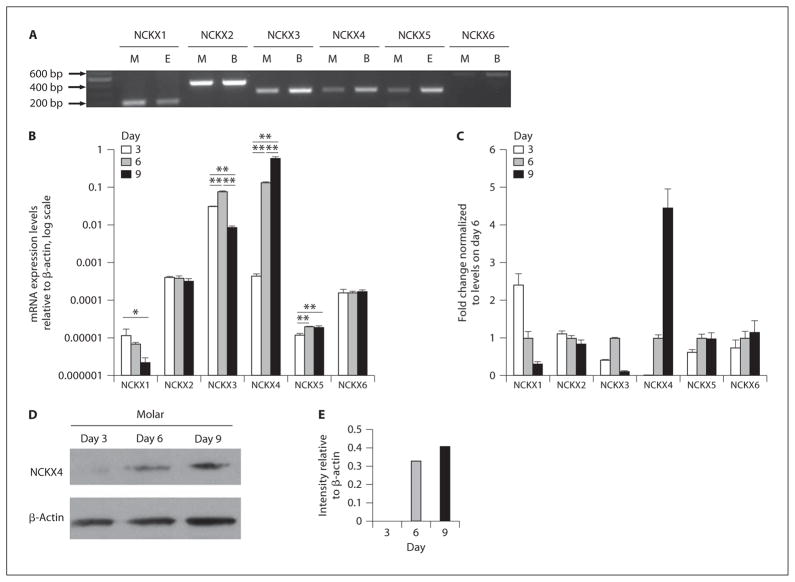Fig. 1.
Identification of Slc24a family members in mouse mandibular first molars isolated on days 3, 6 and 9. A All 6 Slc24a gene transcripts could be amplified by standard RT-PCR from 3-day-old mandibular first molars (M). Amplified fragments were of the predicted sizes (NCKX1, 198 bp; NCKX2, 422 bp; NCKX3, 301 bp; NCKX4, 307 bp; NCKX5, 300 bp; NCKX6, 521 bp). Control tissues included were brain (B) and eye (E). A DNA marker was included on the left of A. B The mRNA expression level for Slc24a family members in the 3-, 6- and 9-day-old molars were examined using real-time PCR. Messenger RNA levels were normalized to β-actin using the delta CT method. Statistical significance was assessed using ANOVA, and the post hoc Tukey’s significant-difference test was used to assess which group differences were significant (*p < 0.05 and ** p < 0.01). Normalized mRNA levels were log-transformed for graphical representation (B). C Fold changes of the mRNA expression level for Slc24a genes calculated using the 2(−Delta Delta C(T)) method normalizing transcript levels relative to values on day 6. D Western blot analysis for NCKX4 expression in mouse mandibular first molars isolated on days 3, 6 and 9. The band size seen for NCKX4 was of predicted size, being approximately 75 kDa. Levels of β-actin in each sample serve as a control. E Protein levels noted in D were quantitated by laser densitometry, and normalized against β-actin expression.

